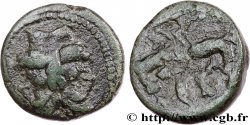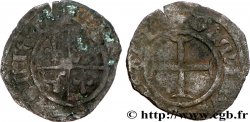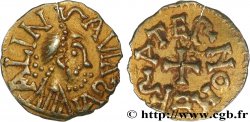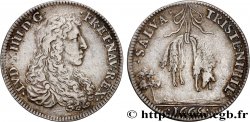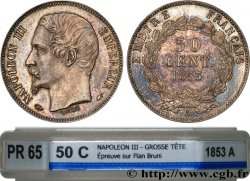v16_0034 - MACEDONIA - PROVINCIA DE MACEDONIA - TESSALONICA Tétradrachme stéphanophore
MONNAIES 16 (2002)
Начальная цена : 200.00 €
Назначить цену : 400.00 €
Цена реализации : 387.00 €
Количество ставок : 16
Максимальная предлагаемая цена : 420.00 €
Начальная цена : 200.00 €
Назначить цену : 400.00 €
Цена реализации : 387.00 €
Количество ставок : 16
Максимальная предлагаемая цена : 420.00 €
Тип Tétradrachme stéphanophore
Дата: c. 90 AC.
Монетный двор / Город: Macédoine, Thessalonique, deuxième région
Металл: silver
Диаметр: 29,5 mm
Ориентация осей монеты: 12 h.
Вес: 16,75 g.
Emission: 2e groupe
Комментарии о состоянии
Très beau portrait idéalisé d'Alexandre. Flan très légèrement décentré sur la droite au revers et sur la gauche à l’avers. Infime petit éclatement de flan à 2 heures
Ссылки в каталоге: :
Происхождение:
Cet exemplaire provient de la vente Hess 257, 12 novembre 1986, n° 100 (1500 FS) et du trésor de Siderokastro (IGCH. 642), découvert en 1961 en Macédoine qui contenait entre 400 et 500 pièces au total, dont les trois quarts des monnaies étaient des tétradrachmes pour Aesillas questeur. Le trésor aurait été enfoui vers 90 avant J.-C
Лицевая сторона
Аверс: описание: Tête idéalisée à droite d'Alexandre le Grand sous les traits du Dieu Zeus-Ammon cornu.
Аверс: легенда: MAK[EDONON]// Q
Обратная сторона
Реверс: легенда: AESILLAS //Q.
Реверс: Описание: Massue verticale entre un panier et une chaise de questeur ; le tout dans une couronne d'olivier surmonté d’un petit A.
Комментарий
Infime petite cassure de coin qui débute sur le menton. La gravure de cet exemplaire, d’une remarquable qualité, présente deux particularités intéressantes. Tout d’abord, la mèche la plus proche de l’œil s’arrondit et se renforce, rappelant la corne des portraits divinisés. D’autre part, la lettre grecque à coté de la légende macédonienne se confond dans les boucles des cheveux, méticuleusement gravées individuellement. Notre graveur serait-il un artiste celte illettré en grec, essayant de mouler son style exubérant sur celui, plus rigide, de l’atelier ?.
A tiny corner break that begins on the chin. The engraving of this example, of remarkable quality, presents two interesting particularities. First, the lock closest to the eye rounds and strengthens, recalling the horn of deified portraits. Second, the Greek letter next to the Macedonian legend blends into the curls of hair, meticulously engraved individually. Could our engraver be a Celtic artist illiterate in Greek, trying to mold his exuberant style to the more rigid one of the workshop?
A tiny corner break that begins on the chin. The engraving of this example, of remarkable quality, presents two interesting particularities. First, the lock closest to the eye rounds and strengthens, recalling the horn of deified portraits. Second, the Greek letter next to the Macedonian legend blends into the curls of hair, meticulously engraved individually. Could our engraver be a Celtic artist illiterate in Greek, trying to mold his exuberant style to the more rigid one of the workshop?








 Cообщить об ошибке
Cообщить об ошибке Распечатать страницу
Распечатать страницу Отправить мой выбор
Отправить мой выбор Задать вопрос
Задать вопрос Consign / sell
Consign / sell
 Информация
Информация

